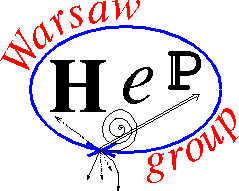Study of the interactions of neutrinos and antineutrinos in the world’s largest water detector Super-Kamiokande.
supervisor: dr Magdalena Posiadała-Zezula, email: mposiada@fuw.edu.pl
Super-Kamiokande is the world’s most famous and largest Cherenkov water detector. It is located in the Kamioka mine located 1km below the top of the mountain, in the Japanese prefecture of Gifu. The detector is used in the international research project Tokai-2-Kamioka (T2K), as a place where oscillations of neutrinos and antineutrinos, produced in the J-PARC laboratory, in Tokai, are studied. Super-Kamiokande is also needed to study the oscillations of neutrinos produced by nature, such as e.g. : atmospheric, solar or Supernova neutrinos. The aim of the exercise is to analyze data from the Super-Kamiokande detector, a study of the selection of neutrino and/or antineutrino interactions from a beam produced in the Tokai-2-Kamioka (T2K) experiment. In the exercise, the student will have an introduction to working with large data sets used in particle physics. To implement the exercise, it will be crucial to familiarize yourself with the specialized environment for data analysis, which is the ROOT package. A good knowledge of the C/C++ language.

